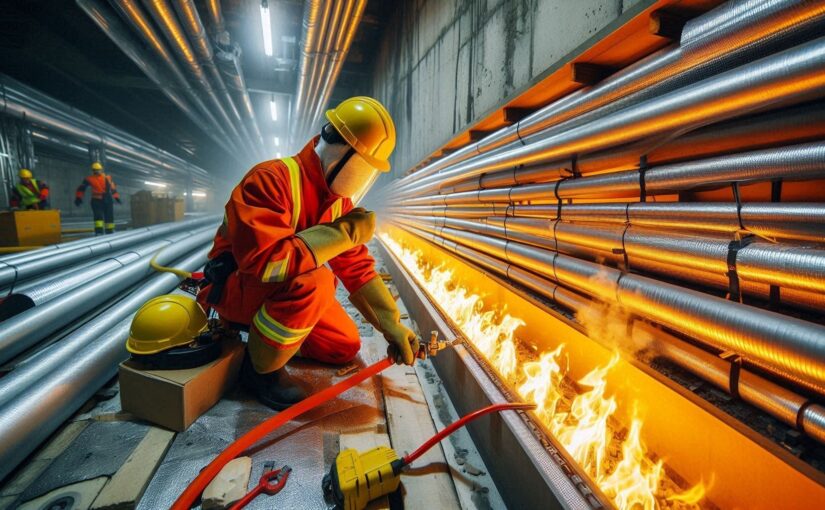Firestop sealing barrier is important components in building safety, designed to prevent the outage of fire, smoke, and toxic gases through opening in walls, floors and ceilings.
Proper installation of these barriers is important to maintain the integrity of fire-rated assemblies and ensure the safety of occupants.
Here are some of the essential tips for installing effective firestop sealing barriers.
- Understand building codes: It is important to understand the building codes and standards before installation firestop sealing barriers. Regulations vary by building type and region and it is important to know the specific needs for your project. Also, it is important to know guidelines of International Building Code and National Fire Protection Association standards and adhere to the same to ensure effective firestop installation.
- Assessment of site: Next thing to consider when installing firestop sealing barrier is the site assessment. All the gaps and penetration needs to be identified. This includes gaps created cables, ducts, joints and pipes. Consider location and size and penetration to determine appropriate firestop solution. This will help in creating a detailed plan and choosing the right firestop installation.
- Choosing right firestop products: Choosing the appropriate firestop sealing barrier is important for robust sealing. You can choose from the best firestop materials including sealants, wraps, collars, putties and pillows, each designed for specific types of penetrations and fire ratings. Consider type of the penetration, fire rating needs, and compatibility when choosing firestop barriers.
- Manufacturer’s instructions: It is important to adhere to the installation instruction of the manufacturer. These guidelines provide detailed steps for preparing surfaces, applying materials and ensuring proper curing.
- Proper surface preparation: Proper preparation of surface is important to achieve robust bond between firestop material and surrounding construction. Any dust, debris, moisture or grease that interferes with adhesion must be removed. Priming surface may also be required in some cases to enhance bonding.
- Apply materials correctly: It is important to apply the firestop materials as recommended by the manufacturer. Proper application ensures that the firestop barrier will perform as required in the event of fire.
- Quality assurance inspection: After installation, conduct thorough inspections, to verify the effectiveness and quality of firestop barriers. Check for gaps, voids or improper installations that could compromise the firestop system. It is important to regularly inspect and maintain for ensuring long-term performance of the firestop barriers.
- Maintain documentation: Maintain detailed records of firestop installation, including product data sheets, instructions and inspection reports. This documentation is valuable for future maintenance, inspections and potential audits by building authorities.
Effective firestop sealing barriers are vital for building safety, preventing the spread of fire and smoke and protecting lives and property. The professional service providers follow the above procedure and ensure effective installation of firestop sealing barriers.
FAQs
- What is the important of firestop sealing barriers?
Firestop sealing barriers are important for preventing the spread of fire, smoke and toxic gases through openings in building assemblies enhancing overall safety and integrity of the structure. - What is the benefit of firestop sealing barriers?
Firestop sealing barrier provide benefit of containing fire and smoke, protecting lives and property by maintaining the integrity of fire-rated assemblies. - What are various types of firestop sealing barriers?
Various types of firestop, sealing barriers including sealants, collars, wraps and fire-resistant boards each designed for specific applications and penetrations.

